E L E C T R I F I C A T I O N
Although many associate the term ‘electrification’ with hybrid or electric cars, it’s much more than that. Electrification or the addition of electronics doesn’t just mean hybridisation. It refers to control of several support systems being handed over to electronics, reducing mechanical load, friction, and weight. With major strides being made in electronics and control systems, more of the car’s processes can be handled electronically. If an ATM card has replaced money in your wallet, why can’t a touchscreen replace a knob or a lever? That’s the principle behind creating the function: making things easier by putting them at your fingertip, literally.
Of course, it isn’t just multimedia or climate control. Mechanical devices for fuelling and transmission are long gone. No more is an archaic shifting assembly seen in a modern car. Electronics handle everything from steering to gear changes and fuel delivery. The new 48-volt electrical system, for example, opens up a whole new set of possibilities, allowing more complex and energy-intensive electronics to step in and further improve the efficiency of systems. To demonstrate, Bosch had a line-up of vehicles of which we sampled some up close and on the track.
Petrol Direct Injection
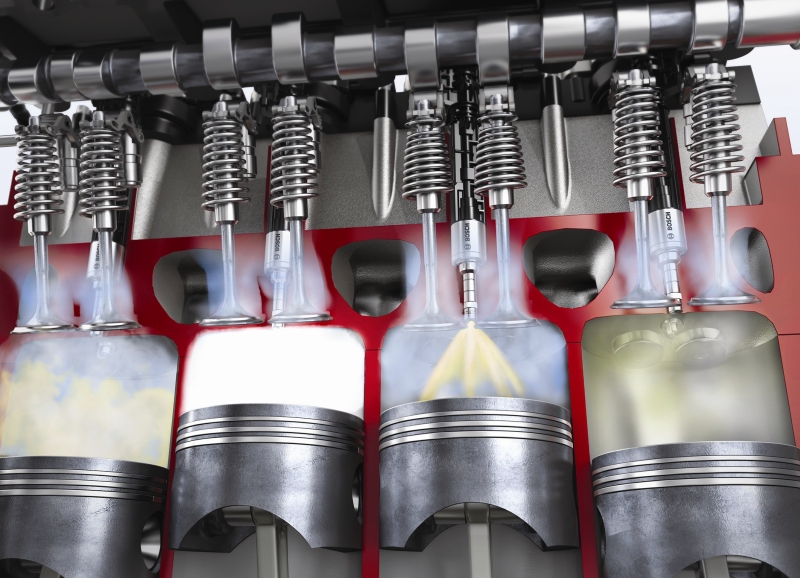
Direct injection improves combustion even further and the result is more power and lower emissions. A fuel injector sprays petrol directly into the cylinder at a pressure of up to 200 bar. Because petrol engines use spark-plugs to ignite the air-fuel mixture, lower injection pressures are needed and the engines are lighter. Bosch are working on more advanced injection systems which are not just higher pressure, at 300 bar, but also more efficient with lower friction components which are also lighter and result in higher engine efficiency and durability.
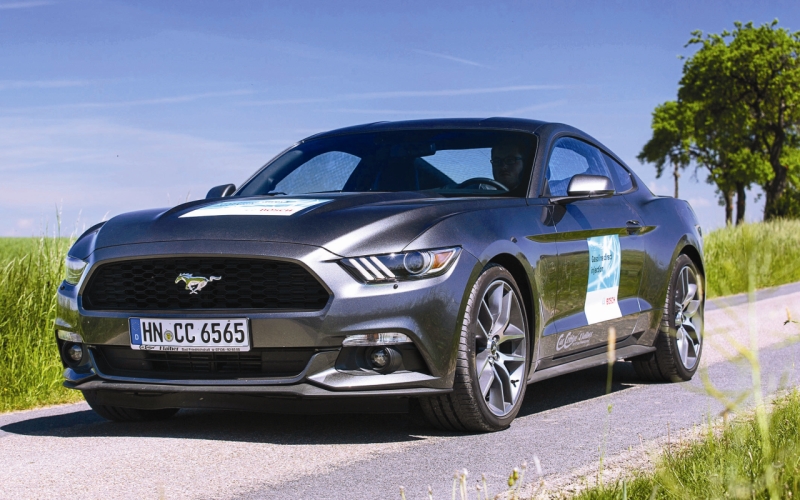
The Ford Mustang was present to demonstrate petrol direct injection, with the turbocharged 2.3-litre EcoBoost under the bonnet. The four-cylinder engine delivers 314 PS and 434 Nm of torque, much more than the previous- and current-generation V6 engine, which incidentally happens to be the base model, positioned below the EcoBoost. It’s also more efficient and delivers more of the power lower down the rev-range, making it easier to drive and more environment-friendly as well.
Second-generation Diesel Direct Injection
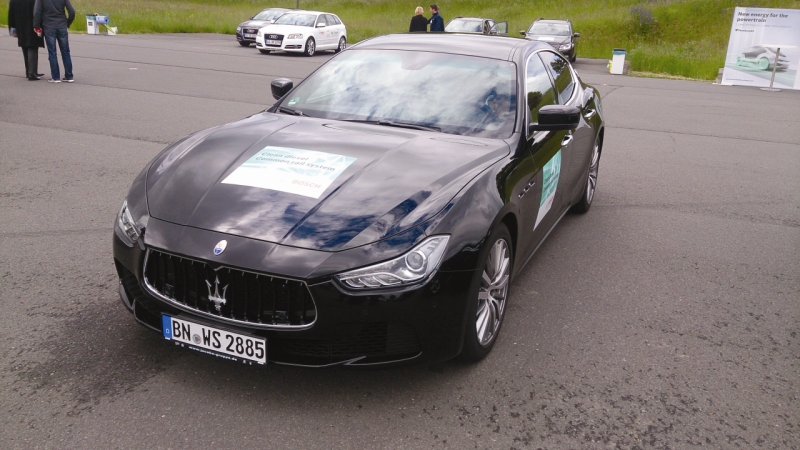
Common-rail direct injection was the biggest advancement in modern diesel engine technology, making diesels not just more efficient and powerful, but also cleaner and less noisy. The fuel is supplied to a pressured rail, which then injects it into the cylinders at pressures of up to 2,000 bar — 10 times more than that of petrol. Diesel engines are compression ignition engines, and thus don’t use spark-plugs to ignite the fuel, relying instead on the heat generated due to the pressure.
The second-gen diesel direct injection system delivers fuel up to eight times per Otto cycle, that is, for one power stroke during low-speed running. Typically, the injections can be classified as pre-, main, and post-. Pre-injections help the fuel spread more evenly in the cylinder, allowing the main injection to burn optimally, with post-injections helping to ensure that there is little or no unburnt fuel left before the exhaust stroke.
The Maserati Ghibli Diesel was at hand to let us experience this technology. The 3.0-litre V6 turbo-diesel motor makes 275 PS and 600 Nm of torque; outputs seen from a petrol engine twice that size just over a decade ago. In the 1,845-kg Ghibli, this V6 diesel returns over 17 km/litre, emitting just 158 g/km of CO2.
eClutch
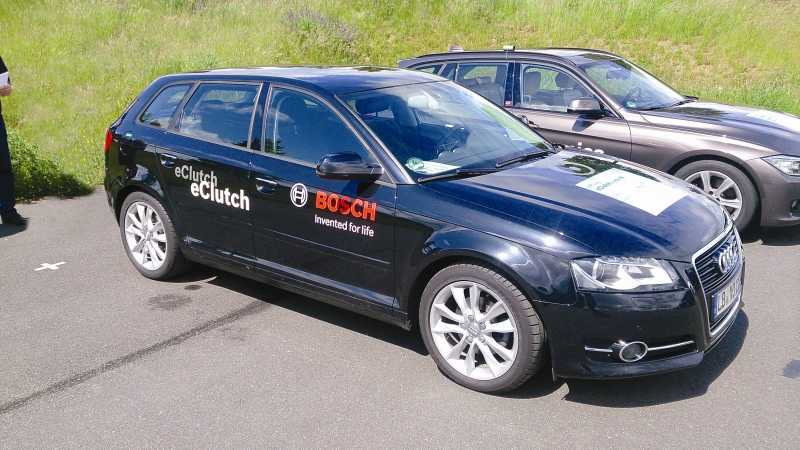
Want a manual gearbox but don’t want the stalls and jerks associated with it? The Bosch eClutch is the answer. Blurring the line between the manual and automatic transmission, the eClutch was primarily designed to improve efficiency while shifting and coasting. The driver can shift gears using the lever, but with no need to use the clutch pedal. Clutch-less or quick-shifts, like those seen on some sport bikes, are possible. The electronics recognise when a shift is about to happen by using the various sensors the car is equipped with, including the throttle position sensor. They also allow the clutch to disengage when coasting or when the car comes to a standstill. Thus, in a panic situation, the driver can come to a stop, even in the fourth gear, without worrying about stalling.
A previous-generation Audi A3 1.4 FSI was used to demonstrate the eClutch system. After having a go around the test-track, my co-driver and instructor, Nikolas, asked me how many times I thought I had coasted. I said it could have been five, maybe, six times. The readout on the application display was clear: 67 times. Every time I’d lifted off, the eClutch went into the coast mode, saving more precious fuel, however little at a time.
Hybrid Systems
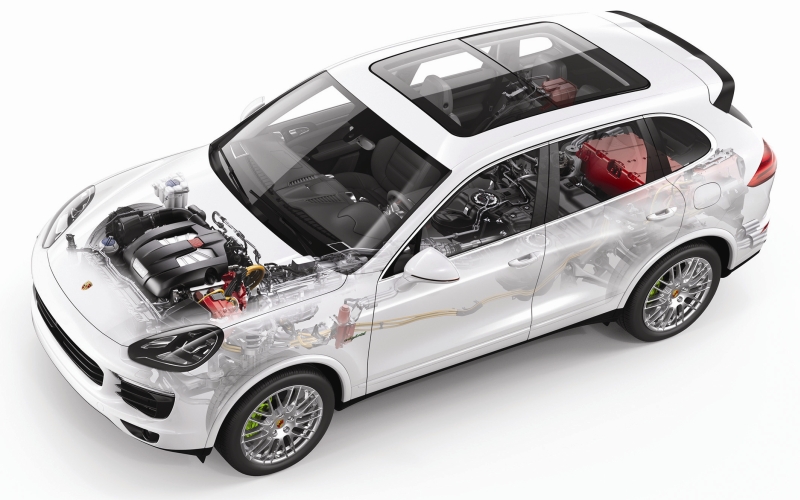
What better way to demonstrate that a hybrid driveline can be both immense fun and extremely practical than by having a 2.3-tonne SUV go sideways, screeching tyres and plastering a smile on your face while still returning about 50 km/litre? Yes, the Porsche Cayenne S e-hybrid is just that. Using a V6 petrol engine in tandem with an electric motor driven by a battery pack, this plug-in hybrid has 416 PS and 590 Nm. It starts in all-electric mode and stays there till the foot on the accelerator prods hard enough for the V6 combustion engine to kick in. Under braking, it charges the battery pack. Needless to say, it performs every bit like a Porsche.
Bosch also had the incredible Porsche 918 Spyder at the proving ground, with Konrad Korn, Porsche’s own brake-tester, giving us mere mortals the chance to experience what it could deliver. With a 4.6-litre high-revving V8 and two electric motors delivering a combined 887 PS and 1,275 Nm, it was clearly nothing I’d experienced before. While brutal acceleration is expected with those kind of numbers, what isn’t is the ferocity of the whole experience. It can rocket out of corners, blitz the straights, and then tear your face off under braking, before diving into another corner at over 100 km/h without so much as a hint of tyre squeal from those 325-section 21-inchers. The oval test-track saw the run from 100 km/h to 200 km/h dismissed in a matter of seconds, and, as we rounded the banking and powered on to the not-long-enough straight, I saw a flash of 240 km/h on the speedo. Before I could finish smiling, my face was peeling off again under braking at the exit of the circuit. Absolutely mental, this Spyder! And, it’s a hybrid.
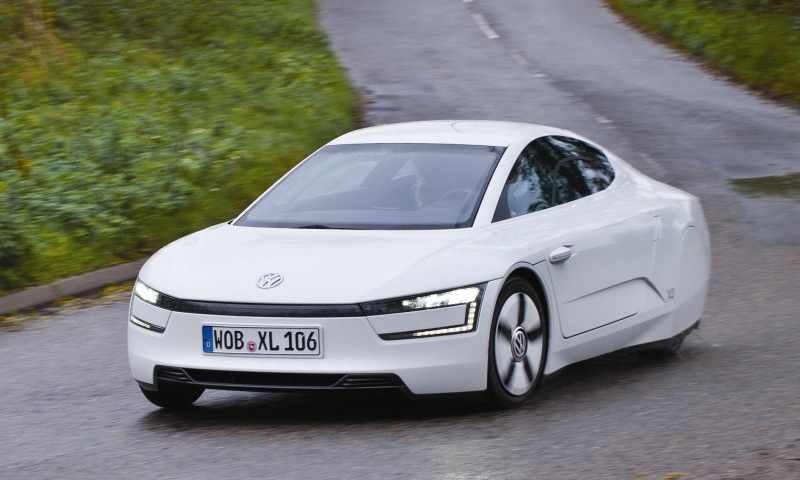
Ultra-high-performance is one end of the hybrid spectrum. At the other is the Volkswagen XL1. This almost all-carbon-fibre efficiency king weighs just about 800 kg and needs 0.86 litres/100 km — that’s right, it delivers 116 km/litre! With a 47-PS, 800-cc two-cylinder diesel engine and an electric motor, the XL1 may sound a bit too clattery, but it’s all about efficiency. Brake energy regeneration also factors in big-time. Simply lifting off results in 0.3 G of braking force — essential to recuperate energy. It was even fun to drive around the handling course. Aerodynamics also play a huge role, so much so that the wing-mirrors are replaced by tiny cameras with a feed inside.
Connected Hybrid
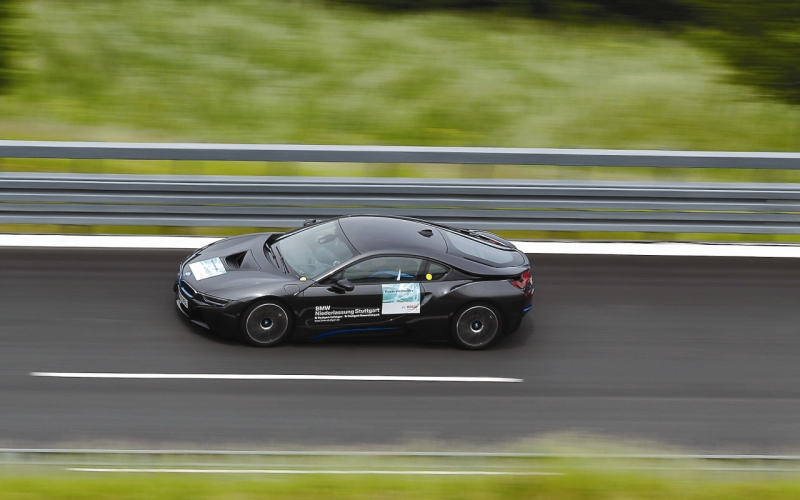
The connected car isn’t too far away, and with the BMW i8, the world has seen just that. Not only is the i8 more efficient than the 918 Spyder — it runs a 1.5-litre three-pot turbo-petrol — but with that engine and the three electric motors, it delivers a combined 362 PS and 570 Nm, allowing for zero-emission driving, hybrid generator mode, or full-on sports mode, where electric all-wheel-drive allows for a potent performance package. It’s made almost entirely from carbon-fibre and CFRP, so it only weighs 1.5 tonnes.
Yes, it can be thrown into corners, and I even managed to hit 210 km/h on the straight of the oval test-track, but the beauty of the i8 is that you feel that it’s trying to get to know you. It wants to be your car and not just another example of a technology centre on wheels that you’ve bought. BMW call this ‘ConnectedDrive’. It can be paired to your phone. It knows where you want to go, and what temperature you’d like the cabin to be at when you step in after work. It knows your favourite songs, and it can pick up where you left off. It’s like a member of the family and it will look out for you. All of this is because of nothing more than a few control units, memory banks, actuators and wiring — it embodies the beauty of modern electronics.
Full Electric
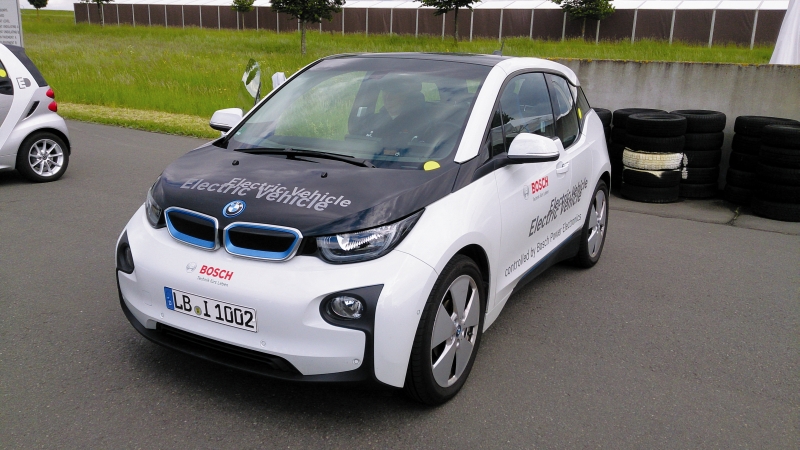
The i8 is one of two BMW ‘i’ cars available and the i3 is the smaller, more efficient of the two. Well, I say smaller, but it is, in fact, much larger, with a door-and-a-half on each side, and four seats with ample space. It can attain 100 km/h in just over seven seconds and travel at up to 150 km/h, then brake and handle the bends pretty well too. Then you consider that it offers the same ‘ConnectedDrive’ features and wants to be a car you want to live in, rather than live with.
The electric drive has the equivalent of 170 PS and 250 Nm of torque; ample for daily use. The i3 here was the REx, or range-extended model, with a tiny 650-cc two-cylinder combustion engine and equally tiny nine-litre fuel-tank. Like the i8, it’s made mostly from carbon-fibre and reinforced polymer and, even with the range-extender, it only weighs 1.3 tonnes. There’s zero CO2 output in electric mode, which can take you up to 150 km, and 100 more with the range-extender, with CO2 now a meagre 13 g/km. With BMW’s installed wall-socket, charging takes just about three hours, but a normal socket will require seven to eight hours.


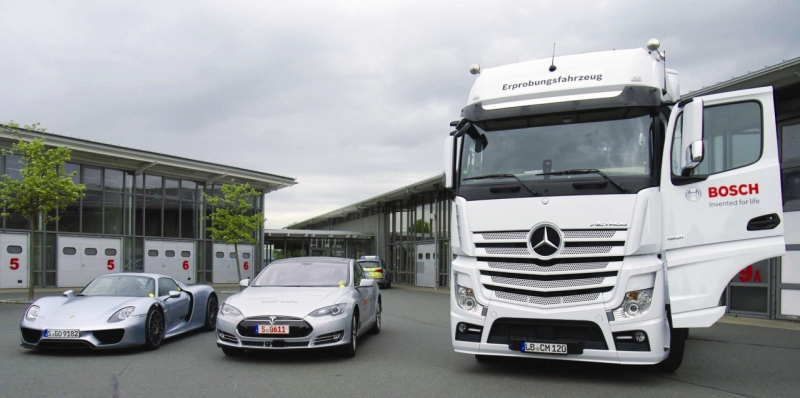
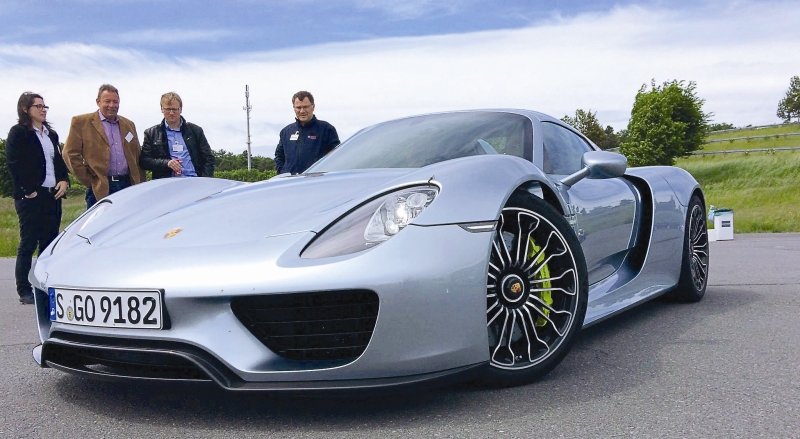




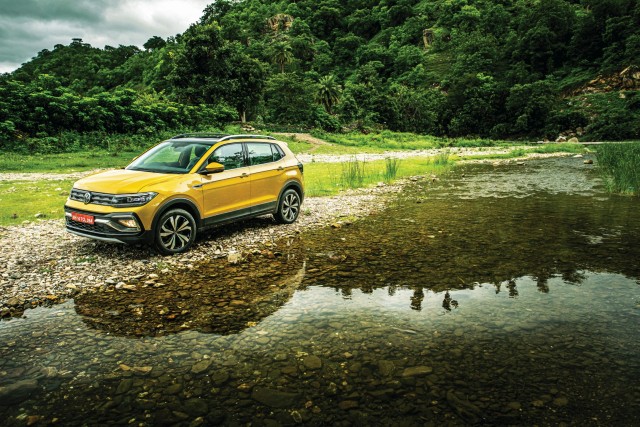
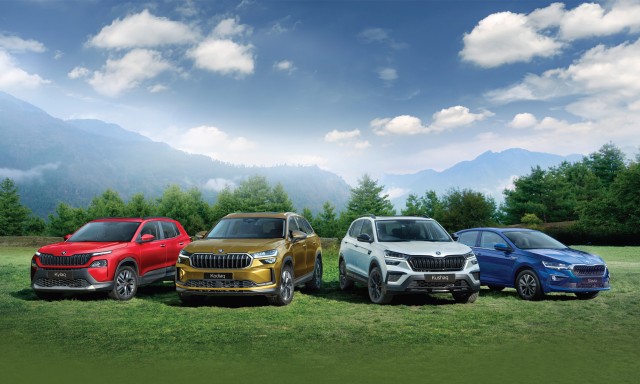

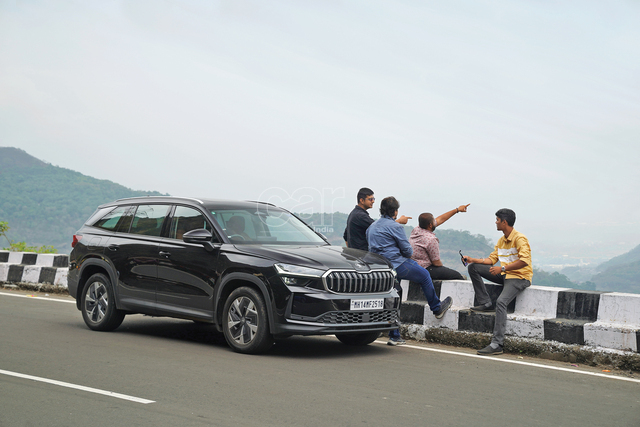


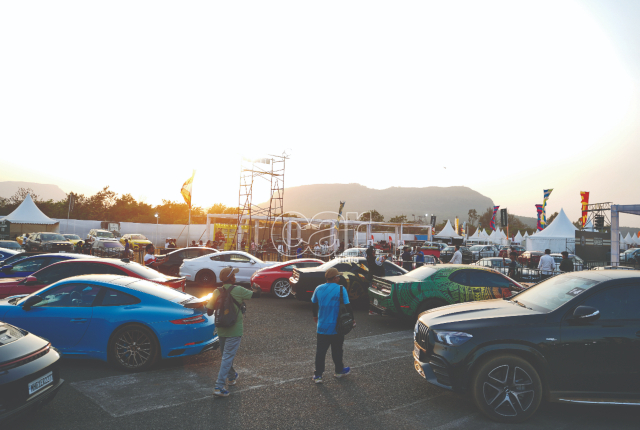
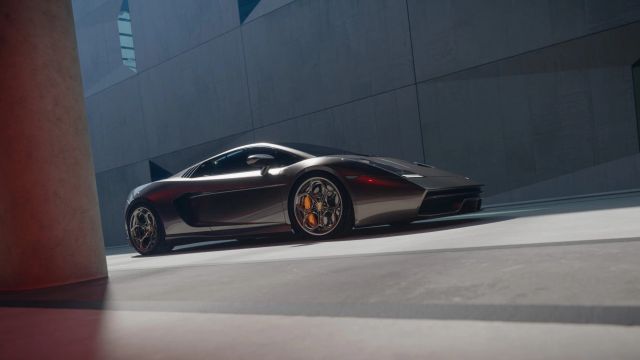
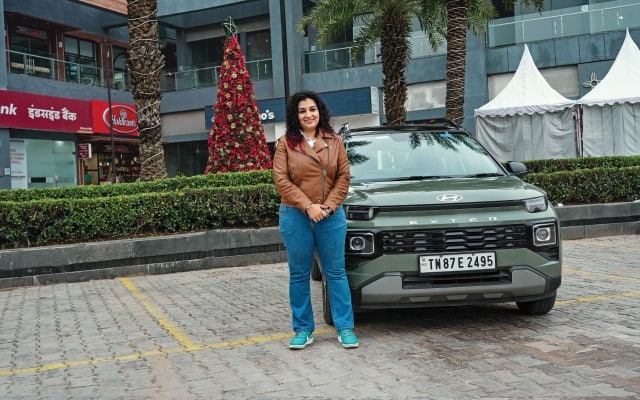

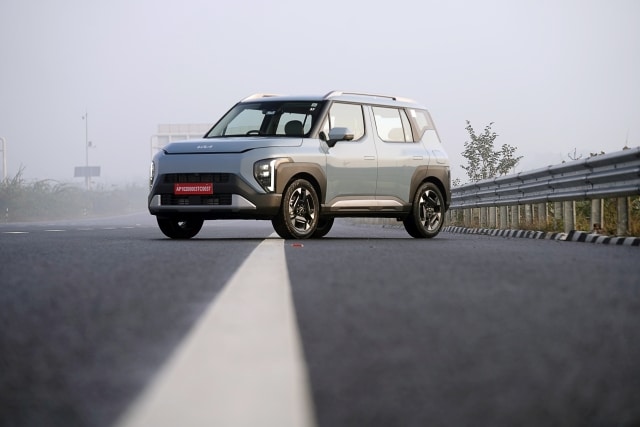




Leave a Reply